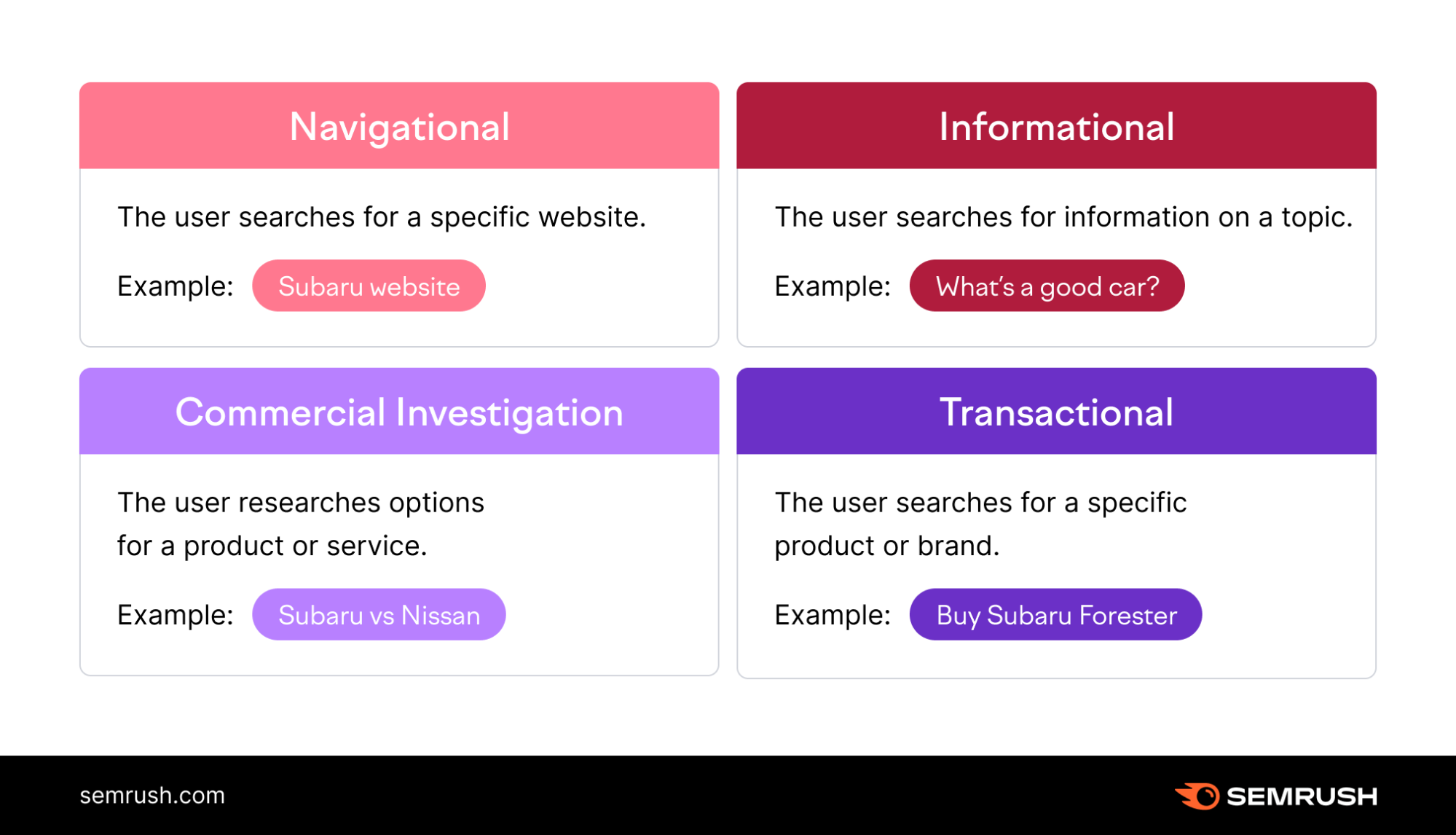
Search intent is a fundamental element of SEO that determines online search objectives. Understanding the four primary types of search intent is crucial for successful content marketing strategies. The primary keyword, ‘search intent,’ plays a pivotal role in optimising content for search engines, thereby enhancing digital marketing efforts and online visibility.
What is Search Intent, and Why is It Important for SEO?
Understanding Search Intent
Search intent, also known as search purpose or semantic search, is the underlying reason behind a user’s online search. It goes beyond the keywords used and delves into the intention behind those words. By understanding search intent, content creators can tailor their material to satisfy the user’s query best, thus providing more relevant and targeted information.
Significance for SEO
Comprehending search intent is crucial for creating content that aligns with what users are actively seeking. This approach not only enhances user experience but also significantly improves a website’s ranking on search engine results pages. When content matches the user’s search intent, it is more likely to be favoured by search engines, leading to increased visibility and traffic.
The Four Types of Search Intent and Why They Matter
Informational Search Intent
When users exhibit informational search intent, they pursue knowledge or specific information. This may involve seeking answers or delving into details about a particular topic. To cater to this intent, content should be optimised to be informative, accurate, and engaging. This can be achieved by creating in-depth blog posts, how-to guides, and FAQ sections that comprehensively address common queries. SEO should focus on question-based or informational keywords, ensuring the content thoroughly covers the topic to meet the user’s informational needs.
Navigational Search Intent
Navigational search intent is evident when users already have a specific website or page in mind and use search engines to navigate directly to a particular URL. Ensuring that your website is easily discoverable for branded searches is crucial to accommodate this intent. This involves optimising for brand-related keywords and ensuring that meta tags and descriptions accurately reflect the site’s purpose. From an SEO standpoint, clear, concise, and accurate meta descriptions and titles for web pages should be prioritised to facilitate easy navigation for users familiar with your brand or website.
Transactional Search Intent
In crafting content for transactional search intent, where users are poised to purchase or sign up for a service, it’s important to guide them smoothly towards conversion. This includes clear calls-to-action, comprehensive product information, and a user-friendly purchasing process. It aligns with Google’s emphasis on creating content that genuinely assists users, as outlined in their guidelines. Integrating detailed product descriptions, competitive pricing, and persuasive elements like testimonials can effectively encourage transactions. This approach meets immediate user needs and adheres to Google’s principles of prioritising helpful, user-centric content.
Commercial Search Intent
Commercial search intent is characterised by users who are contemplating a purchase and are in the process of researching their options. To cater to this intent effectively, content should provide comparative information, product reviews, and buyer guides. Engaging content development is essential in helping users make informed decisions by offering detailed product comparisons, benefits-focused narratives, testimonials, and frequently asked questions (FAQs).

Determining Search Intent
Identifying User Intent
Examining keywords and search queries is instrumental in comprehending user intent. By analysing the specific words and phrases users input into search engines, content creators can gain valuable insights into what users seek.
User behaviour and context also play a significant role in providing valuable clues about search intent. Understanding how users interact with online content and the context surrounding their searches helps determine their underlying intentions.
Tools for Determining Search Intent
Leveraging tools such as Google Analytics and keyword research platforms is essential for determining search intent. These tools provide valuable data on user search patterns, popular queries, and trends, aiding in understanding the motivations behind searches.
Analysing user engagement metrics, including click-through rates, bounce rates, and time spent on a page, offers additional insights into the intent behind searches. This data helps content creators align their material with what users seek, enhancing the relevance and effectiveness of their content strategies.
Striking the right balance in keyword use is key. Seamlessly integrate ‘search intent’ and related terms to engage both search engines and readers.
Seal the Deal with Search Intent to obtain SEO Success
Understanding search intent is pivotal in crafting targeted, relevant content. By aligning your work with the four key types of search intent – informational, navigational, transactional, and commercial – you enhance user experience and improve SEO. Remembering that search intent goes beyond keywords, researching and understanding the underlying motivations behind online searches is essential. Addressing these deeper motivations makes your content more attuned to user needs, driving increased traffic and visibility.
Emphasising the critical role of search intent in content marketing, remember, it lays the foundation for successful SEO and digital marketing strategies. If you’re seeking expertise in managing or refining your website’s content to cater to various search intents, Design Grid is here to help. Our team excels in developing user-centric content that resonates at different stages of search intent, propelling your website’s performance. Reach out to Design Grid to elevate your digital strategy with tailored content solutions.

